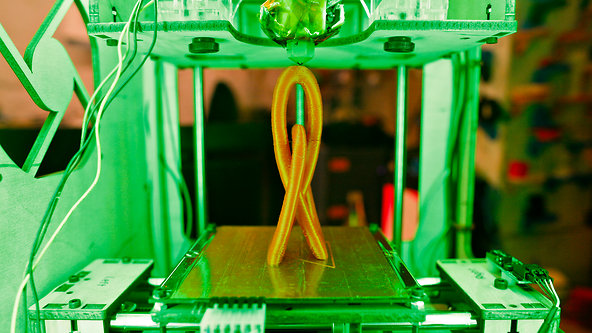Copyright and 3D printing

Looking through the news feed, I came across an interesting article that examines the legality of copying and distributing three-dimensional models for 3D printers. I, too, have always been interested in the legality of creating replicas using 3D printing. Let's see what Nick Bilton writes about .
Downloading (often illegal, from the point of view of human rights defenders) music, movies, books and photos has become so simple that there is no other way. At the same time, there is a whole horde of lawyers struggling with copyright infringement, which, however, can not boast of special success in their field.
Do you think that the current state of affairs is pitiable for authors and creators? Wait for the moment when we can copy physical objects.
')
Little time is left when a 3D printer will appear in each house, standing next to its inkjet counterpart. 3D printers, some of which are cheaper than a computer in 1999, print objects by layer-by-layer spraying of particles from plastic, metal or ceramics in the desired shape. A person will be able to download a three-dimensional model, click "Print" and after a couple of minutes will keep the finished object.
Call it the Industrial Revolution 2.0 . It will change not only the production itself, but also challenge the existing model of ownership and copyright. Suppose that someone really wants the same beautiful mug, like a friend's house. And this one takes a camera and takes some pictures. The software processes the photos and our hero has several such mugs printed on a 3D printer.
Was the law broken? Very similar to what it was, but it is not so!
But what about a floor lamp, a vase, an iPhone case, a board game, a hanger or pieces of furniture? It is highly unlikely that you are breaking the law by copying all these items.
“Copyright does not necessarily protect useful things,” says Michael Weinberg, senior associate at the Washington digital initiative group. “If an item performs only an aesthetic function, then it is protected by copyright, but if you can do something with it, then this is not the kind of thing that can be protected.”
When I told the story about the mug, Weinberg replied: “If you take this mug and go to the clay modeling class and make a similar one, will you ask the same questions? Not". Just because there are new tools, such as 3D printers and files that allow you to quickly recreate the subject, it does not mean that you are breaking the law by using them.
This state of affairs can throw away design and production far back in the days of the Wild West. This is already happening on Thingiverse, a place where more than 15,000 objects are distributed free of charge. Thomas Lombardi, owner of a 3D printer and a regular contributor to Thingiverse, has uploaded a design for the free download of Lucky Charms Cereal Sifter. This brilliant pattern of American engineering is a mug with holes at the bottom.
After Lombardi posted his file on Thingiverse, someone downloaded it and placed it on another site for $ 30.
Since the sieve (which is essentially a sieve) is a useful, and not just a decorative thing, Lombardi could not do anything to stop the "pirate."
The Future of Production, a recently published research paper by the Institute for the Future Palo Alto, California, states that three-dimensional printing will become a “Biggest Explosion for Production”, as jobs in factories, logistics companies will be replaced by 3D printers that will set in stores to print things on the spot, instead of taking them from somewhere.
Ignoring copyright will accelerate the transition to a new era. Downloading music online is booming, as this is an easier way to get music than going to the store for a CD.
And what would you, Khabrachelovek, do - drag yourself on Saturday morning to IKEA or download a mug from the network?
Source: https://habr.com/ru/post/132615/
All Articles